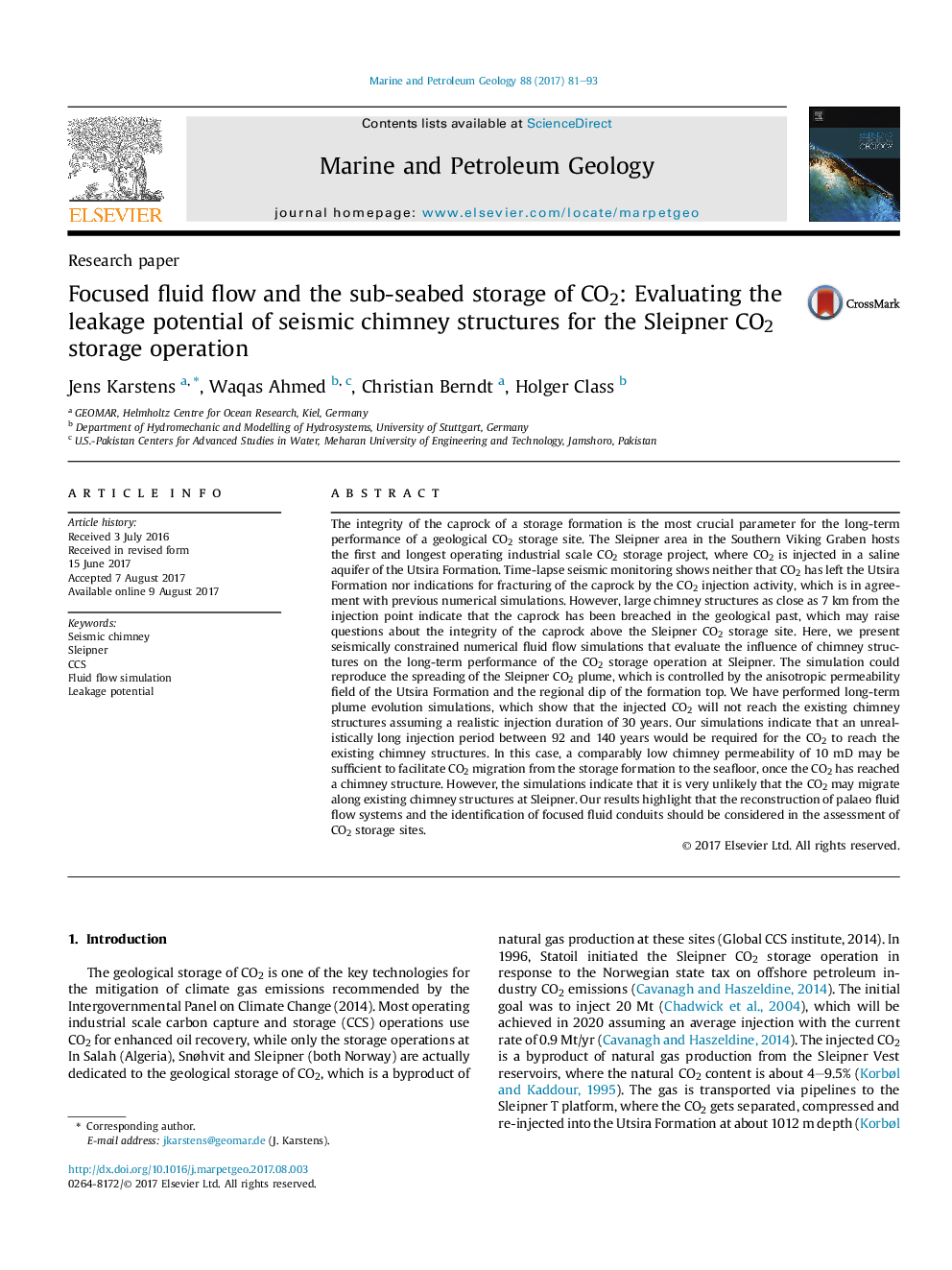| کد مقاله | کد نشریه | سال انتشار | مقاله انگلیسی | نسخه تمام متن |
|---|---|---|---|---|
| 5781912 | 1637139 | 2017 | 13 صفحه PDF | دانلود رایگان |
عنوان انگلیسی مقاله ISI
Focused fluid flow and the sub-seabed storage of CO2: Evaluating the leakage potential of seismic chimney structures for the Sleipner CO2 storage operation
دانلود مقاله + سفارش ترجمه
دانلود مقاله ISI انگلیسی
رایگان برای ایرانیان
موضوعات مرتبط
مهندسی و علوم پایه
علوم زمین و سیارات
زمین شناسی اقتصادی
پیش نمایش صفحه اول مقاله

چکیده انگلیسی
The integrity of the caprock of a storage formation is the most crucial parameter for the long-term performance of a geological CO2 storage site. The Sleipner area in the Southern Viking Graben hosts the first and longest operating industrial scale CO2 storage project, where CO2 is injected in a saline aquifer of the Utsira Formation. Time-lapse seismic monitoring shows neither that CO2 has left the Utsira Formation nor indications for fracturing of the caprock by the CO2 injection activity, which is in agreement with previous numerical simulations. However, large chimney structures as close as 7Â km from the injection point indicate that the caprock has been breached in the geological past, which may raise questions about the integrity of the caprock above the Sleipner CO2 storage site. Here, we present seismically constrained numerical fluid flow simulations that evaluate the influence of chimney structures on the long-term performance of the CO2 storage operation at Sleipner. The simulation could reproduce the spreading of the Sleipner CO2 plume, which is controlled by the anisotropic permeability field of the Utsira Formation and the regional dip of the formation top. We have performed long-term plume evolution simulations, which show that the injected CO2 will not reach the existing chimney structures assuming a realistic injection duration of 30 years. Our simulations indicate that an unrealistically long injection period between 92 and 140 years would be required for the CO2 to reach the existing chimney structures. In this case, a comparably low chimney permeability of 10 mD may be sufficient to facilitate CO2 migration from the storage formation to the seafloor, once the CO2 has reached a chimney structure. However, the simulations indicate that it is very unlikely that the CO2 may migrate along existing chimney structures at Sleipner. Our results highlight that the reconstruction of palaeo fluid flow systems and the identification of focused fluid conduits should be considered in the assessment of CO2 storage sites.
ناشر
Database: Elsevier - ScienceDirect (ساینس دایرکت)
Journal: Marine and Petroleum Geology - Volume 88, December 2017, Pages 81-93
Journal: Marine and Petroleum Geology - Volume 88, December 2017, Pages 81-93
نویسندگان
Jens Karstens, Waqas Ahmed, Christian Berndt, Holger Class,